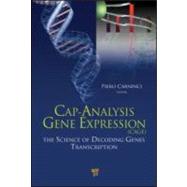- ISBN: 9789814241342 | 9814241342
- Cover: Trade Book
- Copyright: 10/31/2009
The output of eukaryotic genomes is much more complex than expected. Genes produce different variants of RNAs from multiple promoters. One of the ultimate targets of biological analysis is to establish a relationship between the messenger RNAs that are transcribed from the genome and the genomic regions that control their expression — the promoters — in order to decipher the networks that regulate gene expression and the transcription factors that act as master regulators of transcriptional control. Novel technologies have recently appeared that allow deciphering of transcriptional network, based on the identification of the starting site of gene transcription, with the simultaneous measurement of expression level and identification of the promoter elements. These tagging technologies (including cap-analysis gene expression — CAGE — and others) are further boosted from the development of the novel generation of sequencing instruments, which allow transcriptional profiling by sequencing at the cost of microarray experiments. This book is a guide for users of new technologies, as it includes accurately proven protocols, allowing readers to prepare their samples for experiments. Additionally, it provides a guide for the bioinformatics tools that are available for the analysis of the obtained tags, including the design of the software, the sources and web information where they can be downloaded. Finally, the book provides examples of the application of these technologies to identify promoters, annotate genomes, identify new RNAs and reconstruct models of transcriptional control. Although examples mainly regard mammalians, the discussion expands to other groups of eukaryotes, where these approaches are complementing genome sequencing.






